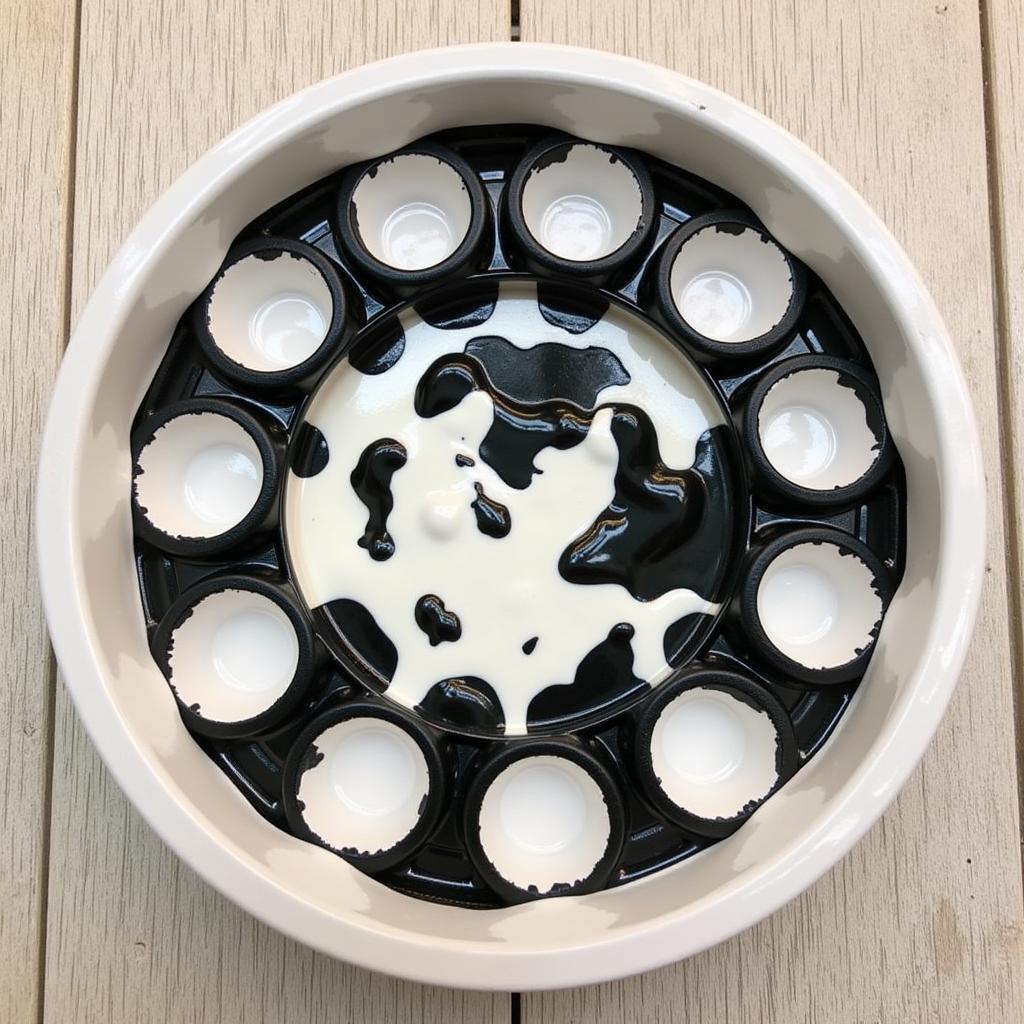Black paint might seem like a basic color, but in the world of art and design, it’s anything but ordinary. While you can easily buy a tube or can of pre-mixed black paint, there are times when you might want to create your own unique shade. Whether you’re aiming for a deep, velvety black or a more nuanced hue with subtle undertones, mixing your own black paint opens up a world of creative possibilities.
But what colors actually combine to make black paint? Let’s dive into the fascinating world of color mixing and explore the different ways you can achieve this fundamental color.
Understanding the Color Wheel: The Foundation of Mixing Black
Before we jump into specific color combinations, it’s helpful to have a basic understanding of the color wheel. The color wheel is a visual representation of color relationships, showing how primary, secondary, and tertiary colors are connected.
- Primary colors: Red, yellow, and blue. These are the foundation of all other colors and cannot be created by mixing other hues.
- Secondary colors: Green, orange, and purple. These are created by mixing two primary colors.
- Tertiary colors: Yellow-orange, red-orange, red-violet, blue-violet, blue-green, and yellow-green. These are created by mixing a primary color with an adjacent secondary color.
To create black paint, we’re essentially aiming to combine colors in a way that absorbs all or most wavelengths of light. This can be achieved by mixing complementary colors, which are colors that sit opposite each other on the color wheel.
Classic Complementary Color Combinations for Black Paint
Here are some of the most common and effective complementary color pairs used to mix black paint:
- Red and Green: Mixing red and green often results in a rich, deep black with a slightly earthy undertone.
- Blue and Orange: Combining blue and orange can create a black with a slightly cooler, more vibrant feel.
- Yellow and Purple: Mixing yellow and purple often yields a black with a slightly warmer, more muted tone.
 mixing blue and orange paint on an artist's palette
mixing blue and orange paint on an artist's palette
Expert Insight: “When mixing your own black, it’s crucial to experiment with different ratios of your chosen colors. Start with small amounts and gradually add more until you achieve the desired depth and undertone,” says renowned color specialist, Emily Carter.
Beyond the Basics: Exploring Other Color Combinations
While complementary colors are the most straightforward way to mix black, you can achieve interesting variations by experimenting with other color combinations. For example:
- Brown and Blue: This combination can create a deep, almost black color that’s ideal for creating shadows and depth in paintings.
- Dark Green and Red: Mixing a deep forest green with a touch of red can result in a rich, almost black hue with a subtle green undertone.
- Multiple Colors: Don’t be afraid to get creative and combine more than two colors. For example, you could try mixing a dark blue, a deep red, and a touch of yellow for a complex black with subtle warm undertones.
Tips for Mixing Black Paint Like a Pro
- Start with Small Amounts: When mixing colors, it’s always best to start with small amounts and gradually add more until you achieve the desired shade.
- Test Your Color: Before applying your mixed black paint to your final project, test it on a scrap piece of paper or canvas to ensure you’re happy with the color and opacity.
- Consider Your Medium: The type of paint you’re using (acrylic, oil, watercolor) can affect the mixing process and final result.
- Embrace the Imperfections: Remember that mixing your own black paint is a creative process. Don’t be afraid to experiment and embrace the unique variations that can occur.
Conclusion: Unleash Your Creativity with Custom Black Paint
Mixing your own black paint allows you to achieve unique shades and undertones that perfectly complement your artistic vision. By understanding the basics of color theory and experimenting with different color combinations, you can unlock a world of possibilities and elevate your creative projects with custom-blended black paint.
FAQ
1. What two colors make black paint the fastest?
While any complementary color pair will technically create black, red and green tend to neutralize each other quickly, making them an efficient choice for mixing black.
2. Can you mix black paint with white to make gray?
Absolutely! Adding white to black paint will lighten it, creating various shades of gray.
3. What happens if I mix all the primary colors together?
Mixing all the primary colors together will typically result in a muddy brown color rather than a true black.
4. Is it cheaper to mix black paint or buy it pre-mixed?
This depends on the quality and quantity of paint you need. Sometimes, it can be more cost-effective to buy pre-mixed black paint, especially if you only need a small amount.
5. Can I mix black paint using food coloring?
While you can experiment with food coloring for crafts, it’s not recommended for professional art projects as the color might fade over time.
For more tips and tricks on color mixing, check out our article on how to make black paint with other colors. If you’re wondering about other interesting color combinations, our article what two paint colors make black might pique your interest.
Need help finding the perfect black paint for your next masterpiece? Contact us at 0373298888 or email us at [email protected]. Our team at Color Box Hanoi is here to help you navigate the world of color and bring your creative vision to life! We’re located at 86 Cầu Giấy, Hà Nội, and offer 24/7 customer support.
